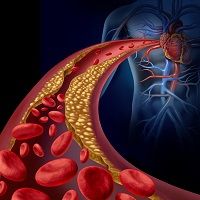Article
How Does Alirocumab Treatment Affect Lipoprotein Metabolism?
Author(s):
Study results show PCSK9 inhibitor alirocumab reduces cholesterol by increasing the fractional clearance rate of IDL and LDL.

Prior studies have shown that treatment with PCSK9 inhibitor alirocumab significantly reduces levels of low-density lipoprotein cholesterol (LDL-C), apolipoprotein B (apoB), and fasting triglycerides (TG). Yet the mechanism underlying this effect on lipid metabolism had not been studied.
In an abstract presented at the 2015 AHA Scientific Sessions, researchers demonstrated that treatment with alirocumab reduces cholesterol in part by increasing the fractional clearance rate of IDL and LDL.
For the study, 18 healthy subjects were given 2 placebo doses followed by 5 doses of alirocumab injection 150 mg every 2 weeks. At the end of each treatment period, researchers measured patients’ fasting levels of lipids and lipoproteins, then fed them a high-fat meal and measured postprandial triglyceride and apoB levels over the next 48 hours.
Three to 5 days later, the researchers measured apoB turnover in very-low density (VLDL), intermediate density (IDL) and LDL.
They found that treatment with alirocumab significantly reduced total plasma concentration of cholesterol by 35%, LDL-C by 60%, and apoB by 45%. Plasma triglyceride levels decreased by 13%. They reported that “LDL-C, LDL-TG, and LDL-apoB isolated from plasma by ultracentrifugation fell by 50±15%, 5±2%, and 41±16%, respectively, on alirocumab.”
They found the reductions in LDL-apoB were due to an increase in the fractional clearance rate of LDL-apoB. They also observed significant reductions of IDL-C, IDL-TG and IDL-apoB, with “a trend toward an increase in IDL-apoB” fractional clearance rate.
The authors reported no effect on VLDL-C, VLDL-TG, or VLDL-apoB from alirocumab.
Based on these results, the researchers concluded that treatment with alirocumab significantly reduced levels of IDL and LDL-apoB in subjects by increasing the fractional clearance rates of those lipoproteins.




